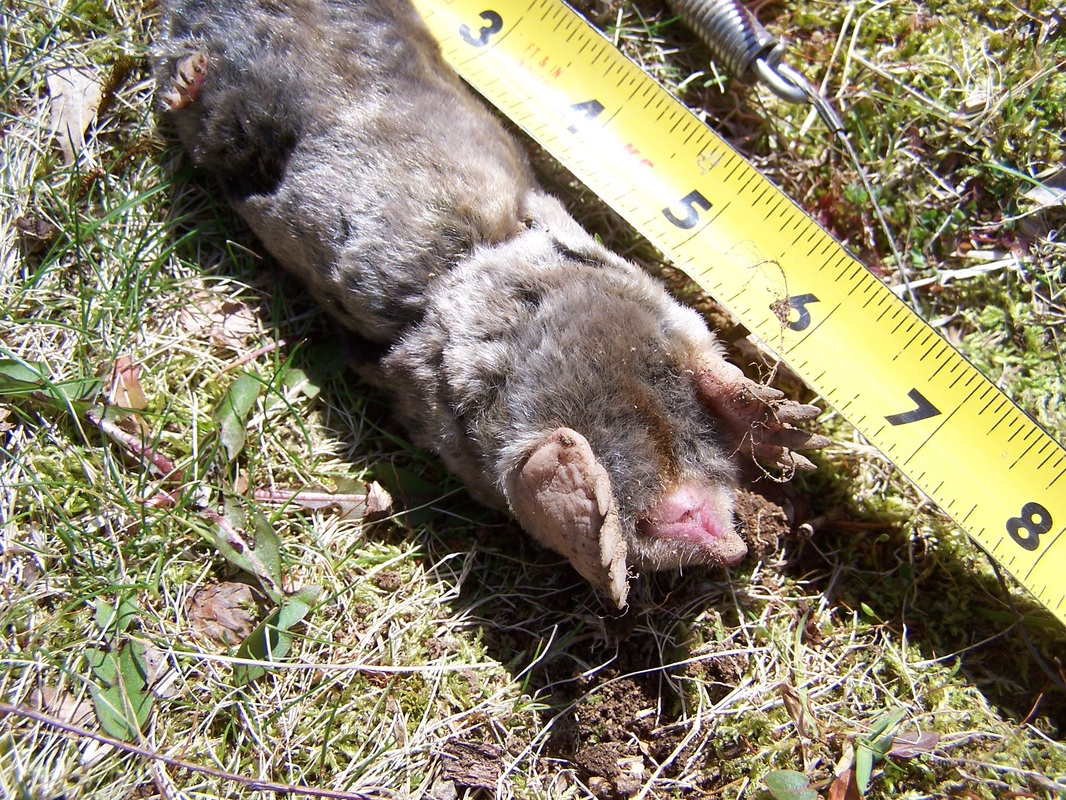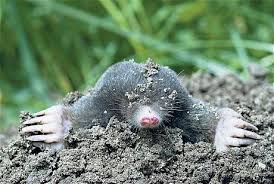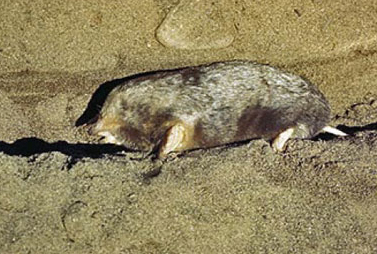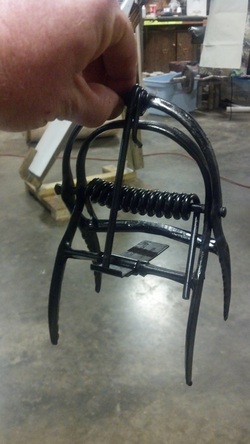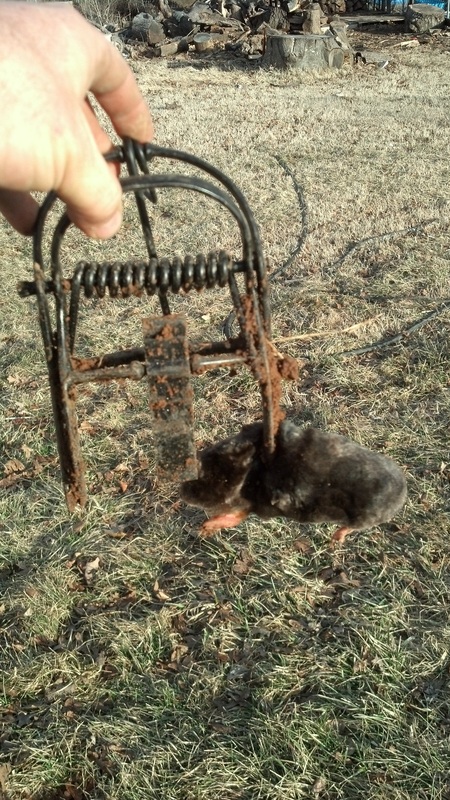Contact us for your complete mole solutions (417) 880-8399
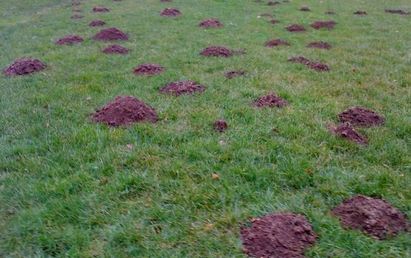
Spring / Summer is upon us, and this is the time of year that mole infestations really become apparent. This an example of typical mole damage from one to two adult moles. At Southwest Nuisance Wildlife Control we have the knowledge and experience to successfully solve your Mole problems. Don't let these Troublesome animals ruin your beautiful yard, landscaping, or gardens this year! Let us get on top of your Nuisance Mole issues before they become a full blown infestation. We offer several service plan options tailored to fit your needs. Plans start at one month of service for $74.99 initial setup/consultation fee (covers the first mole caught) + $24.99 per additional mole caught.
Moles can easily be identified as follows:
Identification
Yates and Pedersen (1982) Lists seven North American species of moles. They are the eastern mole (Scalopus aquaticus), hairy-tailed mole (Parascalopus breweri), star-nosed mole (Condylura cristata), broad-footed Mole (Scapanus latimanus), townsend mole (Scapanus townsendii), Coast mole (Scapanus orarius), and the shrew mole (Neurotrichus gibbsii).
Most moles found in this region tend to be the eastern mole (Scalopus aquaticus). They are insectivores, not rodents, and are related to shrews and bats.
Moles can be distinguished from common field mice (voles), shrews, or pocket gophers - which they are often confused - by distinguishing a few basic characteristics. Eastern moles have a hairless, pointed snout extending approximately 1/2 inch (1.3 cm) in front of the mouth opening. Their small eyes and the opening of the ear canal are concealed in the fur; there are no external ears. The fore feet are very large and broad, with palms wider than they are long. The toes are webbed to the base of the claws, which are broad and depressed. The hind feet are small and narrow, with slender, sharp claws.
Average dimensions and weights are as follows:
Males-
Average total length, 7 inches (17.6 cm)
Average length of tail, 1 1/4 inches (3.3 cm )
Average weight 4 ounces ( 115g )
Females-
Average total length, 6 5/8 inches (16.8 cm )
Average length of tail, 1 1/4 inches ( 3.3 cm )
Average weight 3 ounces ( 85g )
Moles can easily be identified as follows:
Identification
Yates and Pedersen (1982) Lists seven North American species of moles. They are the eastern mole (Scalopus aquaticus), hairy-tailed mole (Parascalopus breweri), star-nosed mole (Condylura cristata), broad-footed Mole (Scapanus latimanus), townsend mole (Scapanus townsendii), Coast mole (Scapanus orarius), and the shrew mole (Neurotrichus gibbsii).
Most moles found in this region tend to be the eastern mole (Scalopus aquaticus). They are insectivores, not rodents, and are related to shrews and bats.
Moles can be distinguished from common field mice (voles), shrews, or pocket gophers - which they are often confused - by distinguishing a few basic characteristics. Eastern moles have a hairless, pointed snout extending approximately 1/2 inch (1.3 cm) in front of the mouth opening. Their small eyes and the opening of the ear canal are concealed in the fur; there are no external ears. The fore feet are very large and broad, with palms wider than they are long. The toes are webbed to the base of the claws, which are broad and depressed. The hind feet are small and narrow, with slender, sharp claws.
Average dimensions and weights are as follows:
Males-
Average total length, 7 inches (17.6 cm)
Average length of tail, 1 1/4 inches (3.3 cm )
Average weight 4 ounces ( 115g )
Females-
Average total length, 6 5/8 inches (16.8 cm )
Average length of tail, 1 1/4 inches ( 3.3 cm )
Average weight 3 ounces ( 85g )
Habitat
Moles reside in underground burrows, and very seldom come to the surface. Moles tend to be very solitary creatures. Networks of mole runways made independently will occasionally overlap and join otherwise separate burrows. Moles have a very demanding diet, and therefore must cover a spacious area for a home range. Three to five moles per acre would be considered a "high population", with more average numbers being in the 1 to 2 per acre range.
The denning areas are made up of what is described as sporadic chambers, and are inter connected with a labyrinth of deep running tunnels. Runways connect from the denning areas to the hunting grounds, and typically range from 5 to 8 inches below the soil surface. The denning chambers that these runway tunnels radiate from are usually 4 to 6 inches in diameter.
As stated above a mole's runway system consists of shallow Tunnels ranging over it's hunting grounds. These "runs" may never be used again, or they may be re-traversed at irregular intervals. Ultimately they will become filled in by settling soil conditions. Typically speaking mole runs range in size from 1 1/4 to 1 1/2 inches in diameter. Moles usually upheave the soil surface along their runways making them easy to follow. In wet condition tunneling will be shallow, and subsequently in dryer conditions they will be somewhat deeper, following their food sources.
Moles reside in underground burrows, and very seldom come to the surface. Moles tend to be very solitary creatures. Networks of mole runways made independently will occasionally overlap and join otherwise separate burrows. Moles have a very demanding diet, and therefore must cover a spacious area for a home range. Three to five moles per acre would be considered a "high population", with more average numbers being in the 1 to 2 per acre range.
The denning areas are made up of what is described as sporadic chambers, and are inter connected with a labyrinth of deep running tunnels. Runways connect from the denning areas to the hunting grounds, and typically range from 5 to 8 inches below the soil surface. The denning chambers that these runway tunnels radiate from are usually 4 to 6 inches in diameter.
As stated above a mole's runway system consists of shallow Tunnels ranging over it's hunting grounds. These "runs" may never be used again, or they may be re-traversed at irregular intervals. Ultimately they will become filled in by settling soil conditions. Typically speaking mole runs range in size from 1 1/4 to 1 1/2 inches in diameter. Moles usually upheave the soil surface along their runways making them easy to follow. In wet condition tunneling will be shallow, and subsequently in dryer conditions they will be somewhat deeper, following their food sources.
|
General Biology
Typically speaking moles favor loose, moist soil plentiful with earthworms and grubs. They are most often found in lawns, fields, and wooded areas shaded by vegetation, and are not able to maintain existence in hard, compact, semiarid soil. To reiterate, moles are not social creatures. Moles do not hibernate, and are active at all seasons of the year. They are most active foraging and caching food stuffs during rainy periods in summer. The gestation period of moles is approximately 42 days. Typically three to five young are born, mainly in March and early April. Moles have only a few predators due to their secluded lifestyle underground. Coyotes, foxes, dogs, badgers, and the occasional opportunistic skunk dig out a few of them. Periodically cats, Owls, or hawks will surprise an unsuspecting mole above ground. But by far spring floods are the greatest dangers facing moles and their offspring. |
